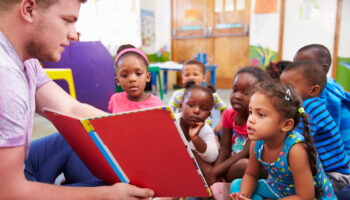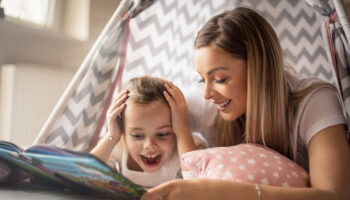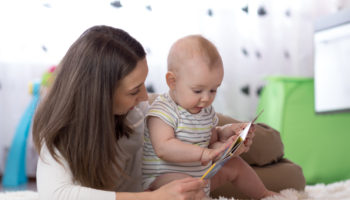Erin DelRegno
“The Very Hungry Caterpillar story is about hope. You, like the little caterpillar, will grow up, unfold your wings and fly off into the future.”
Eric Carle
Eric Carle is a creator and illustrator of many children’s picture books, and the collage artwork within them is very recognizable. He not only focuses on his books being entertaining, but provides the opportunity for children to learn something about the world around them. The book he is most noted for, “The Very Hungry Caterpillar,” focuses on his love of nature. This book, published in 1969, has been translated into 62 languages, has sold over 46 million copies, and is one of the top 10 bestselling children’s books of all time. This story even has its own day to celebrate it, March 20th, the first day of Spring. To celebrate the 40th anniversary of the book’s publication, Eric Carle was invited to create a google doodle on Very Hungry Caterpillar day, 2009. Click on the link to view it: Google Doodles Archive.
This simple, engaging book is based on a nature/science topic; it’s about the life cycle of a caterpillar becoming a butterfly. This story is so much more than that though, as it introduces many concepts and provides you with many opportunities when discussing a variety of themes. It can also be very useful when working on numerous learning objectives with the children in your care.
Yes, you can do a whole theme on Eric Carle or even on this book, but a fun idea would be to bring this book back and read it again, when focusing on the different themes that it can relate to. Reading books multiple times offers many benefits for emerging readers; it gives opportunities for recalling information, answer inquiring questions asked by you, introduction and understanding of complex vocabulary from the story, reading comprehension and more. Some activities you can use, based on this book, are listed below. These can be used at various times throughout the year:
- Life cycle of a caterpillar – This is the main focus of the book, so it is something important to focus on. Of course, you will discuss this as you read the story, but wouldn’t it be great for the children to be able to see this metamorphosis first hand. You can get butterfly garden sets from online suppliers. They come with some caterpillars, a mesh pop-up habitat, a feeding kit, care instructions, and butterfly facts. You can compare what they saw with what occurred in the story.
- Real photographs – This book features a cartoon caterpillar. Make sure to look at some real pictures of caterpillars as they go through this transformation into becoming butterflies. You are helping the children learn about the real world around them. You can even compare the pictures to the ones in the book. Ask the children how they are the same or different from each other.
- Collage – The collage technique Eric Carle uses can be utilized when working on any theme. The children can each make their own collage creation. If you have children work on each part of this process, the artwork could even take a few days to complete. Each step does not have to be completed with the children, but if you choose to, the steps are listed below:
- Step one is creating the paper they will use when creating their collages. The children can work together to complete this. You just need a large piece of plain tissue paper, have the children paint it, then let it dry.
- If you want to add a little texture to step one, before painting the tissue paper, crumple it first.
- The next day, children can cut out their own pieces, and glue and layer them on a separate piece of paper to create their own pictures.
- Feed the caterpillar – You want to not only engage children during a story, but you want to involve them. A hands-on experience could be to have the children feed the caterpillar each piece of food as he eats it in the story. An easy way to make a caterpillar is with a recycled parmesan cheese container. You can decorate it however you want, and one of the openings will be its mouth. You can even count some of the fruits as they go in its mouth, to make sure he ate the same amount as in the story.
- Sequencing – Children can help retell the events from the story, in order as it is read. This would be a great activity to do with children as you are re-reading the story for a second or third time. You can let children put up felt board pieces as the story goes along, use pictures and clothes pins, etc. You can even help children learn some ordinal (first, second, third) and sequence words (next, last) during this activity.
Also, make sure to put these pieces out for children to use during free play time. Children love to re-tell stories to their peers, to stuffed animals, to you, or just to themselves.
- Healthy vs. Unhealthy foods – This is a common preschool theme and there are many activities that focus on healthy and unhealthy foods. This book can be a resource when helping children learn about that. The junk food in this story gives the caterpillar a stomachache, and the healthy foods make him feel better.
- Taste test – The caterpillar tries many new foods in this story. He tried fruits of a variety of colors. This may encourage the children to try some new healthy foods like the caterpillar did.
- Gross motor activity – You can create some of the foods from the story using cardboard pieces and paint. Make sure to leave a hole in the middle so the children can crawl through them like the caterpillar in the story.
- Free play materials – There are many play materials you can make that are associated with this book, as well. Children will gravitate to them since they relate to a familiar story. Here are just a couple of examples:
- If you can find some large, sturdy, non-poisonous leaves, you can punch holes in them and children can lace through them. (If you can’t find sturdy leaves, you could make them with cardboard)
- Create leaves; each with a number and that many circles on the leaf. Also include some poms and tweezers with them. Children can add a pom to each circle, creating their own caterpillar. This play material will show children the meaning of the print number on each leaf and will help them learn one-to-one correspondence as they add poms one at a time.
- Vocabulary – Make sure to point out and clarify some of the vocabulary from the story. Some examples of possible new words include Pop, Nibble, Pushed, and Cocoon, although there are many more you can choose based on the learning level of the children in your care.
Some of the activity props needed for the above activities can be made with materials you may already have in your house or classroom. They may take some time to make, but you will be able to use them for years to come, with a story you know you will read again and again. For more information on Eric Carle and his books, please visit his website The Official Eric Carle Web Site.




